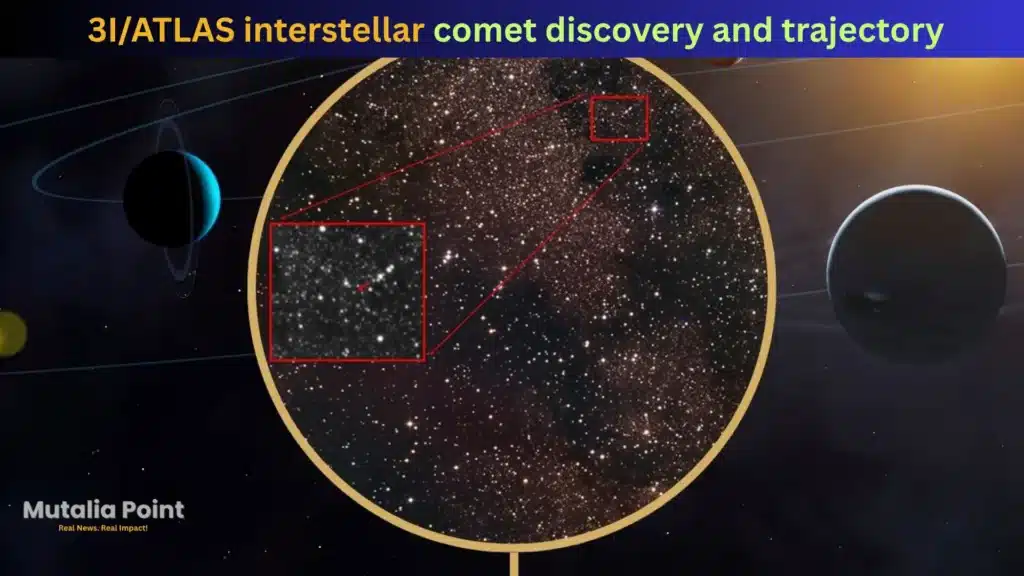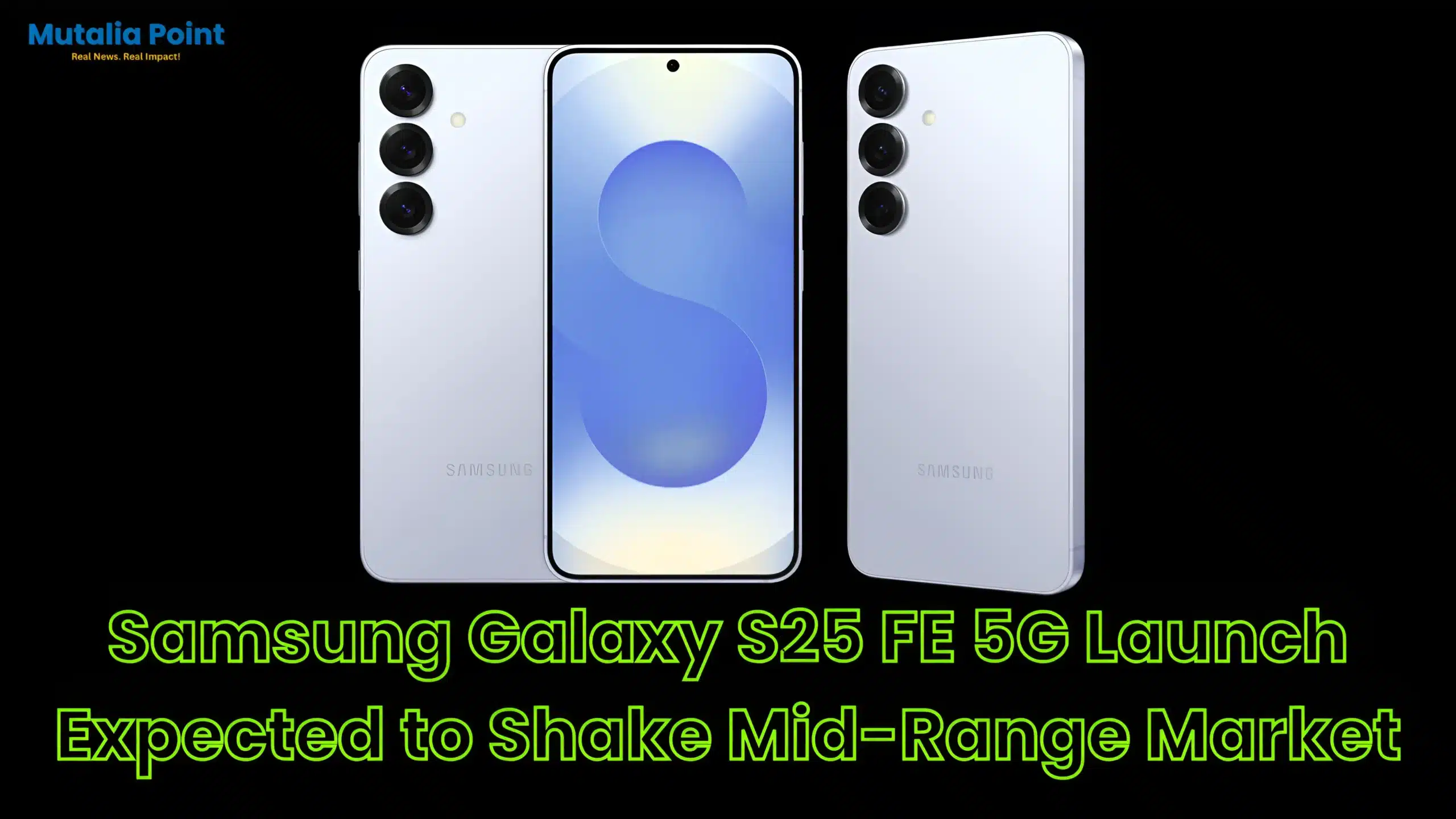3I/ATLAS interstellar comet is currently racing through our solar system, drawing attention from astronomers around the world. Discovered on July 1, 2025 by the ATLAS telescope in Chile, this is only the third confirmed interstellar visitor ever detected—after ‘Oumuamua and 2I/Borisov. It poses no threat to Earth, but its unusual journey and makeup are sparking new questions about objects from beyond our Sun’s neighborhood. As it heads toward perihelion—the closest point to the Sun—expected around late October, scientists are watching closely for changes in its activity and composition.
3I/ATLAS interstellar comet discovery and trajectory

The comet was first spotted at about 4.5 AU from the Sun. Its orbit is strongly hyperbolic and retrograde, with eccentricity around 6 — nearly double that of previous interstellar comet 2I/Borisov.. Its path will bring it inside Mars’ orbit around October 29–30, 2025, at about 1.4 AU from the Sun.While it will remain more than 1.8 AU away from Earth—170 million miles or more—it is still a rare and valuable opportunity to observe material from deep space
3I/ATLAS interstellar comet composition and observations
Initial imaging by Hubble in late July captured the clearest view yet—a teardrop-shaped dust envelope around an icy core, with estimated nucleus size between about 0.3 km and 5.6 km.Observations show a compact coma, reddened spectrum, and dust plume—traits similar to D-type asteroids and active comets.Intriguingly, ultraviolet data from the Swift (Neil-Gehrels) Observatory revealed emission from OH, a water‐byproduct, when the comet was about 3.5 AU from the Sun—unusually distant for water activity.. This suggests a high water content and likely icy grains in the coma, perhaps ejected by sublimation of volatiles such as CO₂ or CO.
Additional ground-based studies—including photometry and spectroscopy—have measured rotation period (~16.16 h), increasing dust activity, reddening color, and modest dust loss rates consistent with a weakly active comet.
More about Pakistan Lunar mission is here.
3I/ATLAS — Key characteristics
| Property | Value / Notes | |||||||||||||||||||||||||||||||||||||||||||||||||||||
|---|---|---|---|---|---|---|---|---|---|---|---|---|---|---|---|---|---|---|---|---|---|---|---|---|---|---|---|---|---|---|---|---|---|---|---|---|---|---|---|---|---|---|---|---|---|---|---|---|---|---|---|---|---|---|
| Official designation | 3I/ATLAS (interstellar comet) | |||||||||||||||||||||||||||||||||||||||||||||||||||||
| Discovery date | July 1, 2025 | |||||||||||||||||||||||||||||||||||||||||||||||||||||
| Perihelion (closest to Sun) | ~Oct 29–30, 2025 (~1.4 AU) | |||||||||||||||||||||||||||||||||||||||||||||||||||||
| Closest approach to Earth | ≈1.8 AU (no threat to Earth) | |||||||||||||||||||||||||||||||||||||||||||||||||||||
| Orbit type | Hyperbolic (interstellar, retrograde) | |||||||||||||||||||||||||||||||||||||||||||||||||||||
| Eccentricity | ~6 (very high; confirms interstellar origin) | |||||||||||||||||||||||||||||||||||||||||||||||||||||
| Inclination | High, retrograde (steep angle to ecliptic) | |||||||||||||||||||||||||||||||||||||||||||||||||||||
| Estimated nucleus size | ~0.3 km to 5.6 km (uncertain) | |||||||||||||||||||||||||||||||||||||||||||||||||||||
| Rotation period | ~16.16 hours (photometric estimate) | |||||||||||||||||||||||||||||||||||||||||||||||||||||
| Activity / volatiles | Dust coma, OH emission detected (water byproduct); possible CO/CO₂ driving activity | |||||||||||||||||||||||||||||||||||||||||||||||||||||
| Speed (relative to Sun) | Very fast (tens to hundreds of km/s at infinity); hyperbolic excess velocity | |||||||||||||||||||||||||||||||||||||||||||||||||||||
| Appearance | Compact coma, reddened spectrum, dust plume | |||||||||||||||||||||||||||||||||||||||||||||||||||||
Latest NewsTrending Now 3I/ATLAS interstellar comet is currently racing through our solar system, drawing attention from astronomers around the world. Discovered on July 1, 2025 by the ATLAS telescope in Chile, this is only the third confirmed interstellar visitor ever detected—after ‘Oumuamua and 2I/Borisov. It poses no threat to Earth, but its unusual journey and makeup are sparking new questions about objects from beyond our Sun’s neighborhood. As it heads toward perihelion—the closest point to the Sun—expected around late October, scientists are watching closely for changes in its activity and composition. 3I/ATLAS interstellar comet discovery and trajectory The comet was first spotted at about 4.5 AU from the Sun. Its orbit is strongly hyperbolic and retrograde, with eccentricity around 6 — nearly double that of previous interstellar comet 2I/Borisov.. Its path will bring it inside Mars’ orbit around October 29–30, 2025, at about 1.4 AU from the Sun.While it will remain more than 1.8 AU away from Earth—170 million miles or more—it is still a rare and valuable opportunity to observe material from deep space 3I/ATLAS interstellar comet composition and observationsInitial imaging by Hubble in late July captured the clearest view yet—a teardrop-shaped dust envelope around an icy core, with estimated nucleus size between about 0.3 km and 5.6 km.Observations show a compact coma, reddened spectrum, and dust plume—traits similar to D-type asteroids and active comets.Intriguingly, ultraviolet data from the Swift (Neil-Gehrels) Observatory revealed emission from OH, a water‐byproduct, when the comet was about 3.5 AU from the Sun—unusually distant for water activity.. This suggests a high water content and likely icy grains in the coma, perhaps ejected by sublimation of volatiles such as CO₂ or CO. Additional ground-based studies—including photometry and spectroscopy—have measured rotation period (~16.16 h), increasing dust activity, reddening color, and modest dust loss rates consistent with a weakly active comet. More about Pakistan Lunar mission is here. 3I/ATLAS — Key characteristics
|















